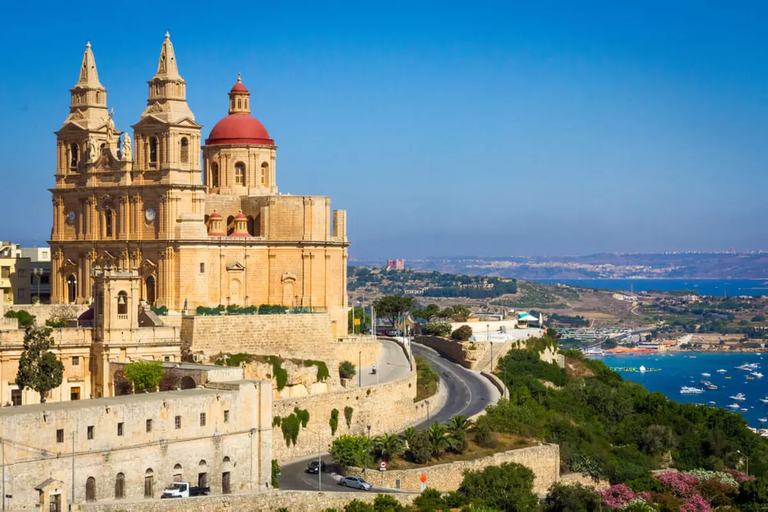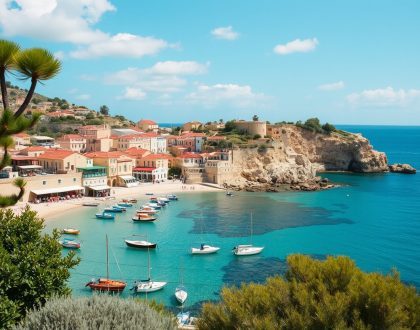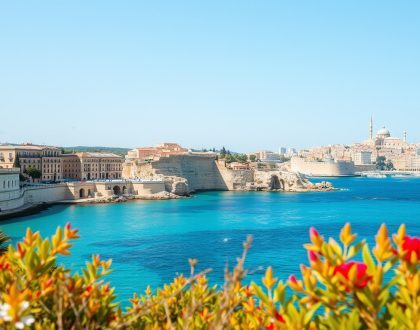Discover Malta’s History, Culture and Beauty

Nestled in the heart of the Mediterranean, Malta is an archipelago that boasts a remarkable blend of history, culture, and stunning landscapes. Despite its compact size, this island nation offers a wealth of experiences, from ancient landmarks to idyllic coastlines, attracting millions of visitors each year. Due to its prime location and rich historical background, Malta has long been a meeting point for various civilizations, resulting in a diverse and distinctive cultural heritage. This article delves into the captivating aspects that make Malta a must-visit destination for travelers seeking a combination of heritage, adventure, and scenic beauty.
Malta's Historical Significance
Malta's history stretches back thousands of years, with evidence of human settlement dating as far back as 5900 BC. Its strategic location between Europe and North Africa has made it a focal point for various empires, including the Phoenicians, Romans, Arabs, Normans, and the British. As a result, Malta is a treasure trove of historical sites, many of which are UNESCO World Heritage Sites.
One of Malta's most iconic attractions is the prehistoric Ġgantija Temples, a series of megalithic structures older than Stonehenge and the Pyramids of Giza. These temples, located on the island of Gozo, showcase the advanced architectural skills of Malta’s early inhabitants and are a testament to the island's long-standing cultural significance. Among Malta’s remarkable historical landmarks are the fortified city of Mdina, often referred to as the “Silent City,” and the capital, Valletta, renowned for its baroque architecture and honored as a UNESCO World Heritage Site.
Valletta: A City Steeped in History
Malta’s capital, Valletta, is one of the smallest yet most enchanting cities in Europe. Founded by the Knights of St. John in the 16th century, the city is known for its grid-like streets, grand palaces, and impressive fortifications. Valletta is not only a historical wonder but also a vibrant cultural hub.
Visitors can explore St. John's Co-Cathedral, a masterpiece of Baroque art and architecture, which houses Caravaggio’s famous painting, The Beheading of Saint John the Baptist. The city is also home to numerous museums, including the National Museum of Archaeology and the Grandmaster’s Palace, where travelers can delve into Malta's rich past. Beyond its historical significance, Valletta offers lively restaurants, cafes, and theaters, making it a perfect blend of history and modernity.
The Blue Waters of Malta
Malta’s Mediterranean coastline is dotted with some of the most beautiful beaches and coves in Europe. From golden sandy shores to rugged rocky coastlines, the island offers something for every type of beach lover. One of the most famous spots is the Blue Lagoon on Comino, a small island between Malta and Gozo. Known for its crystal-clear turquoise waters, the Blue Lagoon is a popular destination for swimming, snorkeling, and boat tours.
For those looking for more secluded beaches, Ramla Bay on Gozo offers a stunning stretch of red sand, while Għajn Tuffieħa and Golden Bay on Malta's northwest coast provide a more tranquil and picturesque setting. Malta's coastline is also a paradise for divers, with its underwater caves, wrecks, and reefs offering some of the best diving experiences in the Mediterranean.
The Enchanting Island of Gozo
Gozo, Malta’s sister island, is a quieter, more rural destination that offers a glimpse into traditional Maltese life. Known for its rugged landscapes, charming villages, and historic sites, Gozo provides a peaceful escape from the hustle and bustle of mainland Malta.
One of Gozo's main attractions is the Citadel in Victoria, an ancient fortified city with panoramic views of the island. Another must-see site is the Ta' Pinu Basilica, a stunning church that has become a place of pilgrimage. Gozo is also known for its natural beauty, with scenic hikes along the coastline, hidden caves, and the dramatic Azure Window—a natural rock arch that, although collapsed in 2017, remains an iconic symbol of the island’s dramatic landscape.
A Cultural Melting Pot
Malta's cultural scene is as diverse as its history. With influences from its various rulers, Malta has developed a unique blend of Mediterranean and European cultures. The island is known for its traditional festas, religious celebrations held in honor of patron saints, which are marked by lively processions, fireworks, and music.
Food is another reflection of Malta’s cultural fusion, with local cuisine blending Sicilian, Arabic, and British influences. Traditional Maltese dishes include pastizzi (flaky pastries filled with ricotta or peas), ftira (a type of Maltese bread), and rabbit stew, considered a national dish. Malta’s wine industry is also growing, with several vineyards offering tours and tastings of locally produced wines.
The island is also a thriving hub for the arts, with numerous festivals, concerts, and exhibitions held throughout the year. The Malta International Arts Festival, held annually in July, showcases local and international artists, while the Valletta Film Festival attracts filmmakers and cinema lovers from around the world.
Exploring Malta's Natural Wonders
Beyond its historical and cultural attractions, Malta is blessed with natural beauty that invites exploration. The island's diverse landscapes range from dramatic cliffs and caves to serene bays and green valleys.
One of the island’s most striking natural attractions is the Dingli Cliffs, located along Malta's western coast. These towering cliffs offer breathtaking views of the Mediterranean and are a popular spot for hiking and birdwatching. Another must-visit natural site is the Blue Grotto, a series of sea caves known for their brilliant blue waters. Boat tours are available, allowing visitors to explore these captivating caves up close.
For nature lovers, Malta’s numerous nature reserves and parks offer opportunities for hiking, birdwatching, and picnicking. The island of Comino, in particular, is known for its walking trails and unspoiled natural beauty, making it an ideal destination for outdoor enthusiasts.
Conclusion: A Destination Like No Other
Malta may be small in size, but it offers a travel experience rich in diversity, history, and natural beauty. From the ancient megalithic temples to the bustling streets of Valletta, and from the pristine beaches to the quiet charm of Gozo, Malta provides something for every type of traveler. Its unique blend of cultural influences, combined with its Mediterranean charm, makes Malta a must-visit destination for anyone looking to explore a land where history and nature coexist in perfect harmony. Whether you're interested in history, culture, or simply soaking up the sun by the sea, Malta promises an unforgettable journey.
FAQs
What are the top attractions in Malta?
Malta's top attractions include Valletta, the Ġgantija Temples, Blue Lagoon, Mdina, and the island of Gozo.
Is Valletta worth visiting?
Yes, Valletta is a UNESCO World Heritage Site and offers a wealth of historical landmarks, museums, and stunning architecture.
What is the best time to visit Malta?
The best time to visit Malta is between April and October, when the weather is warm, ideal for sightseeing and enjoying the beaches.
Can I visit Malta’s sister islands?
Yes, visitors can easily explore Gozo and Comino, both offering unique experiences, including nature, history, and beautiful coastlines.
Is Malta good for diving?
Yes, Malta is renowned for its diving spots, offering underwater caves, reefs, and shipwrecks, making it a popular destination for divers.
How many days should I spend in Malta?
A stay of 5-7 days is ideal to explore Malta's main attractions, beaches, and nearby islands like Gozo and Comino.
What is Malta famous for?
Malta is famous for its ancient historical sites, beautiful beaches, vibrant festivals, and its blend of Mediterranean cultures.
Is Malta a good family destination?
Yes, Malta offers family-friendly attractions such as sandy beaches, historic sites, and outdoor activities suitable for all ages.
What is traditional Maltese food like?
Maltese cuisine is a mix of Mediterranean flavors, with dishes like pastizzi (pastries), rabbit stew, ftira (Maltese bread), and seafood.
Are there festivals in Malta?
Yes, Malta hosts numerous festivals throughout the year, including religious festas, cultural events, and arts festivals like the Malta International Arts Festival.
Recommended Posts

Hidden Gems to Discover in Malta
October 4, 2024

Explore Malta’s History & Beauty in Fall
October 4, 2024

Malta Tourism Growth in 2024
October 3, 2024




